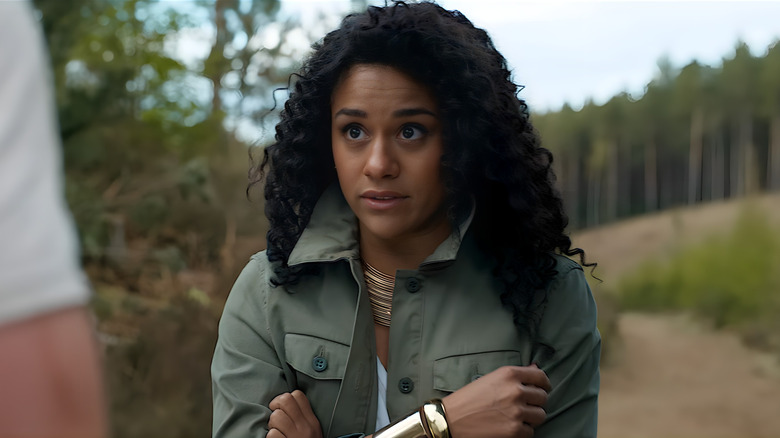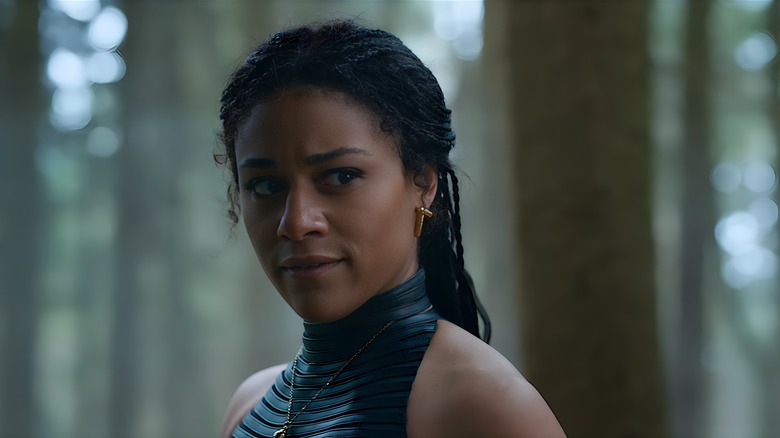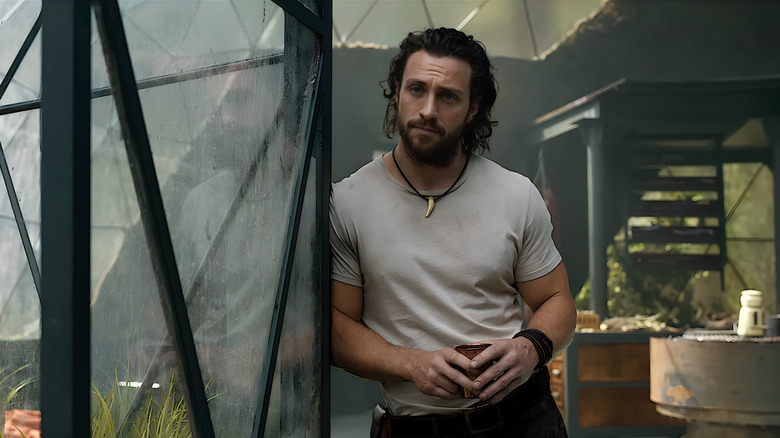
This article contains mild spoilers for “Kraven the Hunter.”
ADR, an acronym for Automated Dialogue Replacement, has existed in the film industry in one form or another ever since the advent of sync sound in cinema, when it was originally known as “looping.” Heck, not just little pieces of an actor’s performance, but entire vocal performances have been dubbed in post-production — for reasons that vary from an actor’s natural voice being thought of as subpar to issues recording dialogue during filming. Whether it’s for censorship, clarity, a punch-up, or a necessity due to the film’s editing process, most movie watchers are used to moments when an actor’s lip movements don’t quite match with the words they’re supposedly saying.
At least, audiences used to be fine with that, until the digital revolution made it possible to further paper over such little visual hiccups. Unlike, say, the removal of hidden wires and cables and whatnot, the CG-replacement of an actor’s mouth isn’t as simple or as seamless. A production would likely need to replace an actor’s entire face and/or head in order for a fix to be imperceptible. Merely replacing an actor’s mouth leads to issues with the Uncanny Valley, which only draws more attention to the problem.
Sadly, it seems the production team behind Columbia Pictures’ Marvel films would rather take a trip through the Uncanny Valley then fix their films’ gaffes the old-fashioned way. This month’s “Kraven the Hunter” features a moment that makes at least one major character look incredibly strange.
Kraven the Hunter makes Ariana DeBose’s Calypso look like a cartoon in one scene
“Kraven the Hunter” has an exposition problem, to put it mildly. This is likely due to a ton of meddling between while the film was being shot and while it was being edited. One of the biggest casualties of the movie is the character of Calypso (Ariana DeBose), whose origin story and identity is markedly different in the movie than in the Marvel comics. “Kraven” has one of the most painfully awkward first acts in recent memory, perhaps due to this massive change in Calypso’s character, where a young version of the woman is told at length about her family’s inheritance of a magic potion that will heal anyone who drinks it in strange ways.
The young Calypso impulsively decides to give the potion to a young Kraven after he’s mauled to death by a lion, which revives him and gives him some sort of animalistic super powers. Bizarrely, Calypso does not stick around to see if her gift of the potion worked. The two of them lose track of each other until adulthood, when a grown-up Kraven (Aaron Taylor-Johnson) tracks down Calypso, who’s now working as a high-powered lawyer in London.
During a key scene in which Kraven takes Calypso to his lair within his late mother’s plot of land, the two characters have a very odd conversation about the potion, which seems to go in vague circles. There’s a distinct sense that this version of the scene was not what was originally written or shot, and a few angles of DeBose appear to be composited in via blue- or greenscreen. What’s more, the lower half of DeBose’s face seems to be replaced for much of the scene, indicating that her original dialogue has been radically changed. This, of course, leaves her performance a wreck, with her eye movements and expressions all over the place. The net effect this obvious digital tampering has is similar to the late-’50s animated series “Clutch Cargo,” which became famous (and off-putting) by superimposing footage of human mouths over the drawings of animated characters as a cost-saving measure. The 21st-century version of this, as seen in “Kraven the Hunter,” is hardly an improvement.
Why ‘fix it in post’ is an unsustainable practice
Hilariously, this is the second comic book movie Sony have released this calendar year which features such egregious tampering with the film’s dialogue. Famously, “Madame Web” did a number on Tahar Rahim’s performance as Ezekiel Sims in that movie, making his entire character feel like a member of the Uncanny Valley. We now know via various interviews and such that this is partially due to the filmmakers pivoting away from major plot points as originally scripted and shot, the better to allow the movie to line up with the continuity of the joint Sony/Marvel Studios “Spider-Man” films. It’s possible that similar cinematic universe canon reasons were behind the changes to “Kraven,” or it could simply be that too many cooks in the kitchen spoiled the broth.
The real culprit, I feel, is blockbuster Hollywood’s increasing reliance on cobbling together films from too-disparate pieces. Sure, putting together scenes between two or more actors who were never in the same place at the same time isn’t a new trick, but it’s one that should be used sparingly. Nowadays, some movies are making the technique part of their entire plan, in similar fashion to Marvel Studios films arranging for a period of reshoots long before a frame of footage has been shot. This all leads to the mess that can be seen in “Kraven the Hunter,” where the various revisions and pivots stick out even if we don’t know what was originally there. It’s akin to reading an essay filled with bits of white-out that have been scribbled onto hastily. It technically is a complete work, but there’s something lost by all the covering up instead of scrapping it and starting from scratch.
Hopefully, the laughable incompetence of the ADR in “Madame Web” and “Kraven the Hunter” will discourage studios and filmmakers from this approach. Sure, they probably made these decisions out of some misguided desire to appease as many fans as possible and give them what they think they want, but all they’ve done is make a bigger mess of things. If you’re gonna fail, it’s better to fail with your head held high, rather than with someone (or something) else’s mouth plastered over your own.




Leave a Reply